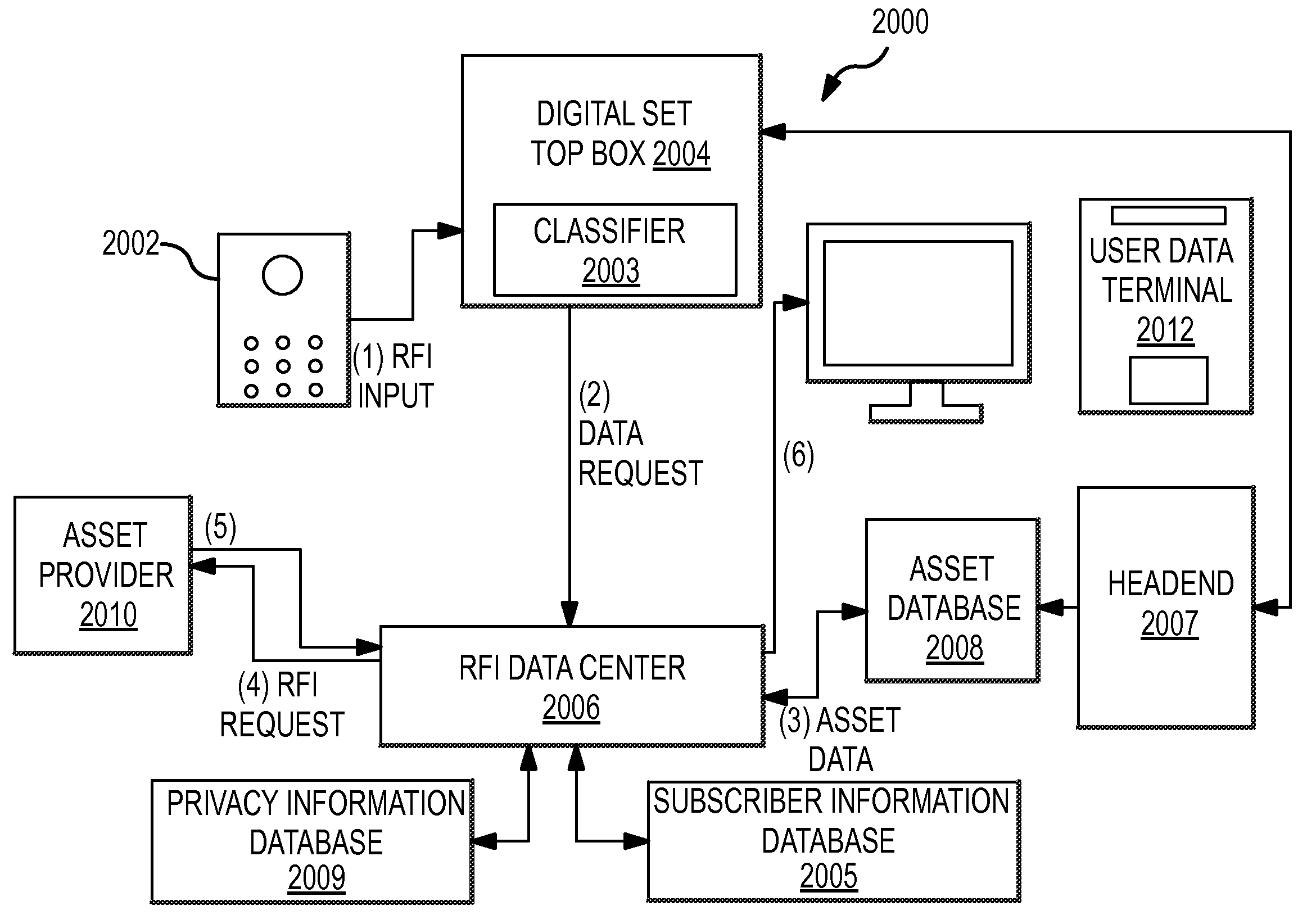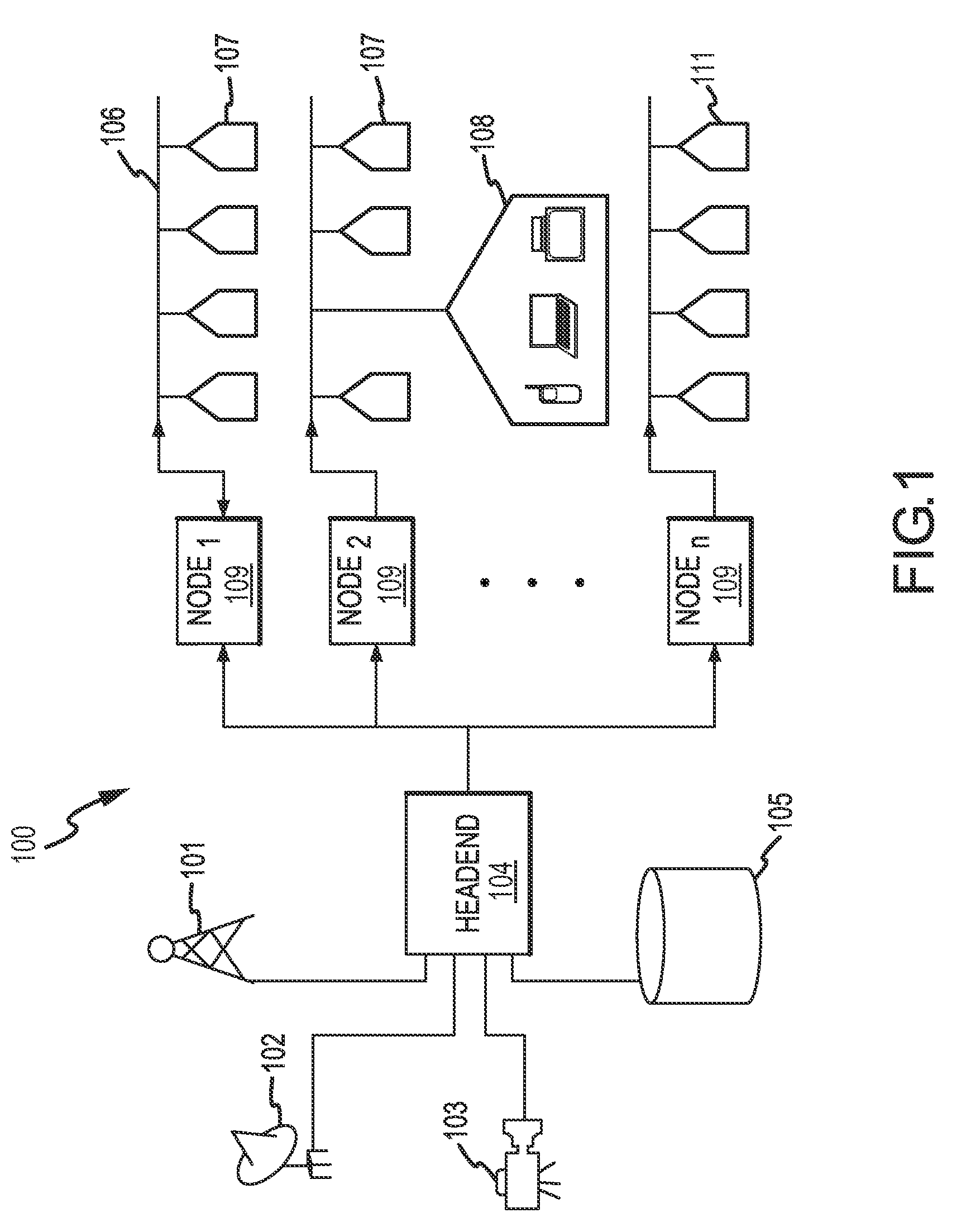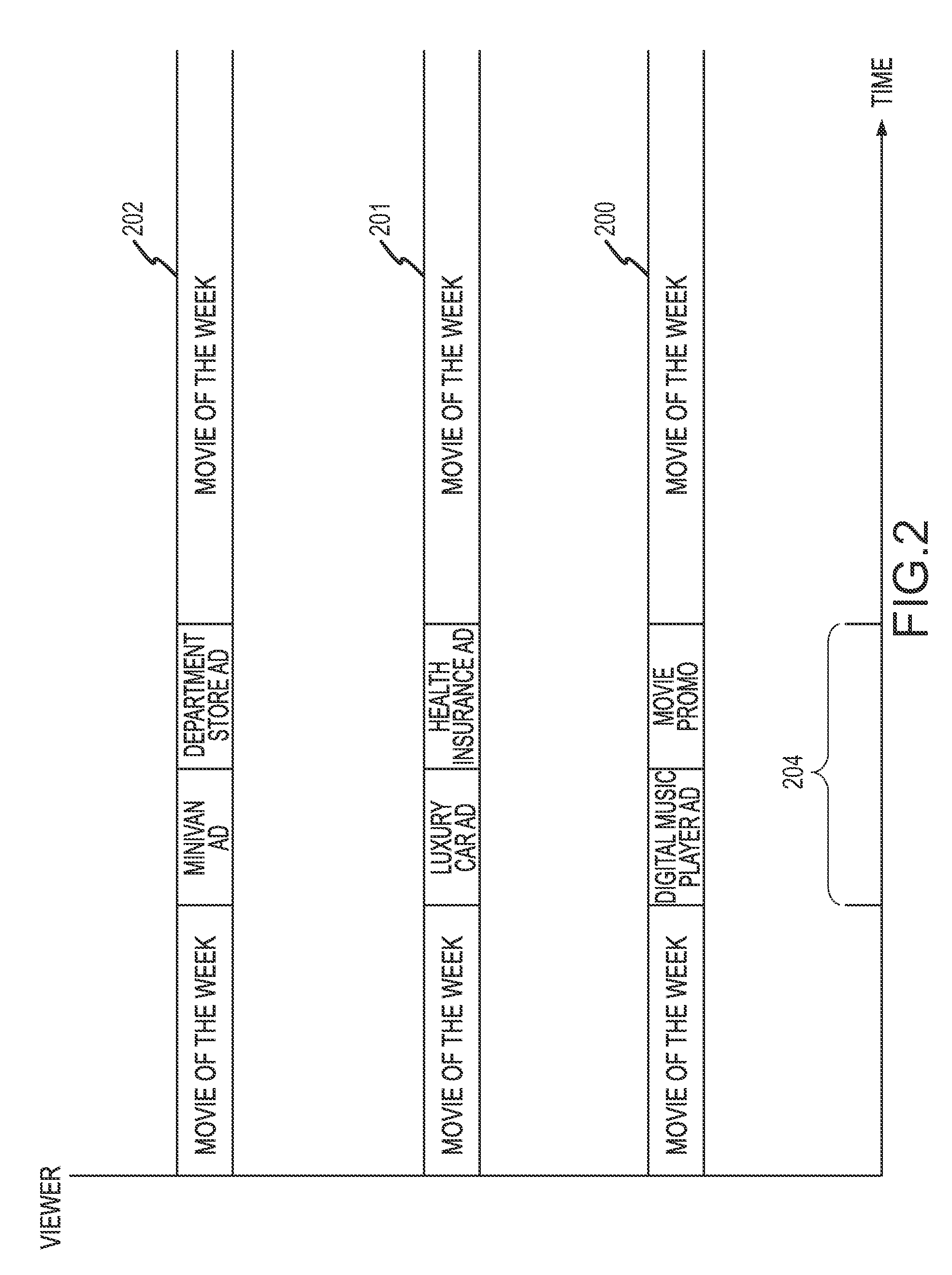Request for information related to broadcast network content
a broadcast network and content technology, applied in the field of providing information of interest, can solve the problems of limited reach, high cost of air time for such advertising, and limit the effectiveness of television advertising, and achieve the effect of effective targeting assets to users, high impact and large reach
- Summary
- Abstract
- Description
- Claims
- Application Information
AI Technical Summary
Benefits of technology
Problems solved by technology
Method used
Image
Examples
Embodiment Construction
[0044]The present invention relates to various structure and functionality for delivery of assets in communications systems, as well as a system for encouraging asset consumption, verifying asset consumption, and linking subsequent consumer behavior to such assets and associated business methods. In implementations described below, the invention relates to monitoring usage of one communications network and using resulting information to deliver an asset to the user or another user(s) via another communications network. In one particular implementation, a user receives a first asset, such as a commercial airing during a programming break or another advertisement, via a broadcast television network such as a cable television network. Based on an indication of interest, e.g., an affirmative indication via a user input or an inference drawn from selection of the asset by a targeted advertising system, additional information is provided to the user via e-mail, internet advertising, phone...
PUM
 Login to View More
Login to View More Abstract
Description
Claims
Application Information
 Login to View More
Login to View More - R&D
- Intellectual Property
- Life Sciences
- Materials
- Tech Scout
- Unparalleled Data Quality
- Higher Quality Content
- 60% Fewer Hallucinations
Browse by: Latest US Patents, China's latest patents, Technical Efficacy Thesaurus, Application Domain, Technology Topic, Popular Technical Reports.
© 2025 PatSnap. All rights reserved.Legal|Privacy policy|Modern Slavery Act Transparency Statement|Sitemap|About US| Contact US: help@patsnap.com



